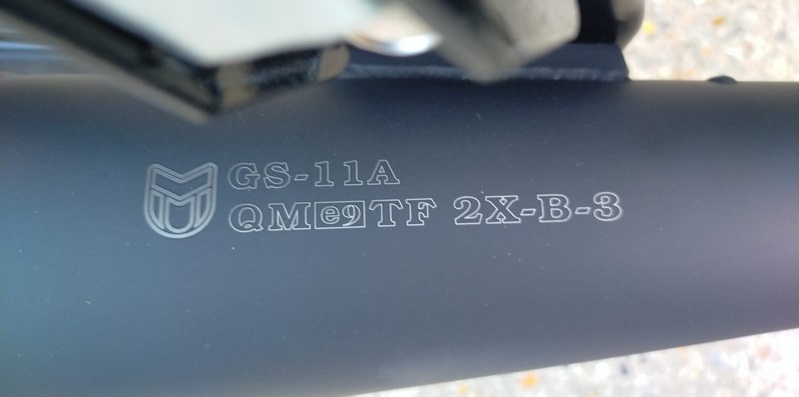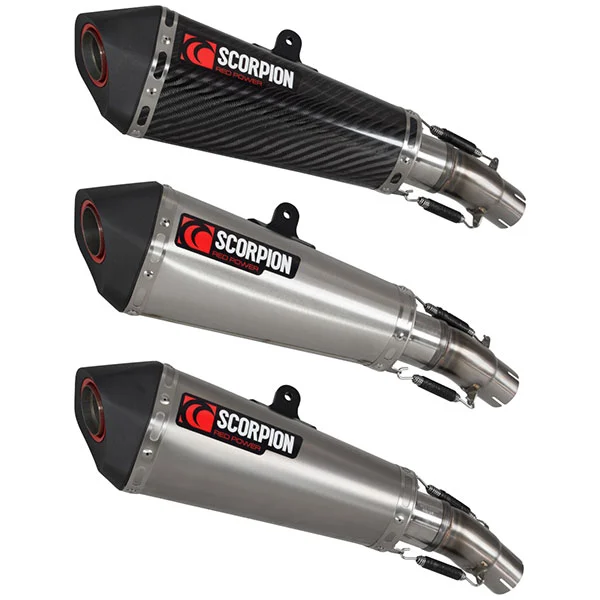Gone are the days when you could legally throw on the loudest pipes on the market and blip the throttle until your heart’s content.
With both noise and emission laws cracking down on what is legally permissible when it comes to exhausts, we thought it was worth a look to make sure you and your bike are on the right side of the law.
Let’s get into it.
Save Money On Your Motorcycle Insurance
- You could pay less than £195*
- Compare quotes from 25+ UK providers
- Fill in one form to compare top bike insurers
What the law says

To start with, any new motorcycle on UK roads must comply with UK laws on noise and meet Euro 5 emissions regulations.
The original exhaust system must carry the manufacturer’s name and part number; to comply with the law, you must not remove the baffle.
Should you fit an aftermarket exhaust, it must carry the EC Directive or British Standards markings, which confirms the exhaust complies with the necessary regulations.
If an exhaust carries the markings’ Race Use Only’ or ‘Not for Road Use’, it is an illegal road system, and the police can prosecute you.
It is also illegal to try to change the stamping by removing or covering it up.
You can read the full Motorcycle Silencer and Exhaust Systems Regulations 1995 here.
An exhaust marked “pre-1985 motorcycle only” is also a legal exhaust system; this stamping covers older classic motorcycles exempt from current emissions regulations.
Noise Laws
“It’s illegal to modify the exhaust system to make a vehicle noisier after it has been ‘type approved’ (checked it meets environmental and safety standards).
The police can also take action if your vehicle’s silencer doesn’t work in the way it was designed or if you’re driving in a way that creates too much noise.”
Gov.uk
In the UK, motorcycles can emit noise levels up to around 80dB, with engine size being the determining factor.
It is said that most police forces account for bigger engine sizes and will allow noise emissions to go up to around 89 dB.
Such as is laid out in the Loud Exhaust Offences publication from Essex police; check it out here.
Passing an MOT
Strangely the guidelines that MOT testers have for passing a motorcycle when it comes to the exhaust are less stringent than the actual law.
When your motorcycle goes in for an MOT, the tester will test the noise emitted.
If an aftermarket exhaust is fitted, the motorcycle will pass, provided the tester thinks it isn’t any louder than a standard fit exhaust.
It is a system that is solely down to the specific MOT tester.
If they think the exhaust is too loud, they may pass the motorcycle, but make an advisory note that it is borderline too noisy to cover themselves.
“The exhaust system and silencer should be in such condition, or of such a type, that the noise emitted from the motorcycle is not clearly unreasonably above the level expected from a similar motorcycle with a standard silencer in average condition.”
MOT Government guidelines
The tester warms the motorcycle engine up and revs the engine to half the maximum speed to test the noise emitted.
The exhaust does not need to carry any British Standard markings for the MOT and will not be checked for them.
However, should your exhaust have “Race Use Only” or “Not For Road Use” or similar stamped on it, then it will fail.
Euro 5 regulations
As of January 2021, all new motorcycles must be Euro 5 compliant.
In 1999 the first Euro 1 regulations came into force, with the plan to reduce emissions and pollutants from motorcycles and mopeds.
A European industry standard was set to which every new bike sold in Europe had to conform.
With each standard since emissions rules have become tighter and Euro 5 is the latest regulation manufacturers need to meet.
What this means is that manufacturers have had to get creative with their exhaust and catalytic converter designs.
As the exhaust system is on show on a motorcycle, the desire is to keep it attractive while fulfilling its purpose of meeting industry standards.
Sometimes this works, and the manufacturer gets it right from a style perspective, and other times less so, leading owners to search elsewhere for an aftermarket exhaust system.
Related: E10 fuel for motorcycles
Buying an aftermarket exhaust
When buying an aftermarket exhaust, you need to be sure that it is approved for UK road use.
The best way to do this is to buy from a reputable exhaust dealer that offers warranties on their exhausts.
If your motorcycle is still under warranty, you will want to check with the manufacturer that the exhaust you want to fit won’t void your manufacturer’s warranty.
You will also need to inform your insurer that you have fitted an aftermarket exhaust. Not doing so may invalidate your insurance.
An important note is that it is illegal to modify your motorcycle to make it louder if it has been type-approved.
So taking out the baffles, for example, can make your exhaust illegal as it will break noise laws.
Also, removing the baffles changes the construction and usage of the original exhaust, which your insurer won’t appreciate and may also invalidate your insurance as a result.
What happens if you are caught riding with an illegal exhaust?
Riding a motorcycle with an illegal exhaust is a non-endorsable offence.
However, a maximum of £1,000 fine could be issued as a result of the offence.

